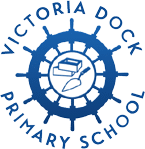

Art – curriculum information
Intent
At Victoria Dock Primary School we strive to deliver a high quality art and design curriculum which allows our pupils to recognise the significance of art and design in their everyday lives and to think of themselves as artists. We aim to educate the child as a whole. The development of Art and Design skills enables each child to achieve personal fulfilment and satisfaction. Pupils will develop their understanding of the visual language of art with effective teaching and carefully thought-out sequences of lessons and experiences.
Pupils will learn to be brave, innovative and respectful. They will be taught in a way that ensures progression of skills and techniques, and follows a sequence to build on previous learning. They will gain experience and skills of a wide range of formal elements of art in a way that will enhance their learning opportunities, enabling them to use art and design across a range of subjects to be creative and solve problems. Art and Design provides pupils with the opportunities to explore their world. It is a chance for pupils to record their ideas in ways that are an alternative to the written word. The art they produce will connect with their audience and challenge them to think.
We want our pupils to enjoy and value art and design, to know why they are doing things and not just how. They should also understand and appreciate the value of the subject in the context of history, of personal wellbeing, the creative and cultural industries, and its many career possibilities.
Art and Design is an important part of our school’s ethos and is fundamental to developing children at Victoria Dock with knowledge, understanding, strategies and skills to live healthy, safe and responsible lives through our culture capital which is unique to our school setting and community.
Implementation
Art is taught using the Kapow scheme of work. It offers full coverage of the Key Stage 1 and Key Stage 2 curriculum as well as incorporating SMSC development. The content is categorised into 5 areas: Making Skills, Generating Ideas, Formal Elements, Knowledge of Artists and Evaluating.
Each unit contains lessons which are designed to be taught in sequential order, with the exception of the lessons in Making Skills and Formal Elements units which can be taught in any order. These 2 units feature within each of the year groups and develop the discrete skills and techniques of art, craft and design. Work is planned with reference to the National Curriculum and the Constellation Trust progressive knowledge document. The National Curriculum breaks Art down into 4 strands; Materials, Techniques, Artists and Expression and Imagination. Skills in the EYFS are planned through the objectives within the EYFS Statutory Framework and ensure progression into Key Stage 1.
Our scheme of work has been designed as a spiral curriculum with the following key principles in mind: cyclical (pupils return to the same skills again and again during their time at Victoria Dock Primary School), increasing depth (each time a skill is revisited it is covered with greater complexity, prior knowledge (upon returning to a skill, prior knowledge is utilised so pupils can build upon previous foundations).
Formal elements of art units are taught (with the exception of Year 6) and these lessons focus on the discrete skills of the formal elements of art: line, shape, tone, texture, pattern, and colour. Each year group from Year 1 to Year 6 has a unit called Art and Design Skills which focusses specifically on developing pupils’ art, craft and design skills in a discrete way. The application of skills from these two recurring units are then applied throughout the rest of the scheme (e.g. sculpture and collage, pre historic art, etc).
Within Key Stage 1 and 2, all pupils have their own sketchbooks. They collate ideas and practice their vital art and design skills. Sketchbooks are a continuous working document that moves with the children as they travel up the school. This means that they act as a great way to show their artistic skills progress.
Purpose of Sketchbooks
- Used to gather, collect, experiment and reflect
- Used to assess children’s skills and progression.
- Used for reporting and sharing with parents and governors.
- Continue with the child throughout the school in order to show their progression of skills throughout their school journey.
- A way for children to express themselves and their creativity.
The EYFS is the bed rock of all subjects. Whilst not following the Kapow scheme of work, the F1 and F2 curriculum gives children the necessary skills and knowledge to succeed in art and design when they enter Year 1 and beyond. Progressive skills have been identified and included in each of the following areas: knowledge of artists and designers, exploring and developing ideas, evaluating their own work, making skills (drawing, painting, craft, design, materials and techniques), knowing and applying formal elements of form, line, pattern, shape, texture and tone. In addition, children in Nursery and Reception work progressively towards Curriculum goals each term as follows:
| Nursery | Reception | |
|---|---|---|
| Autumn | Brush and Paint | Drawing a Self Portrait |
| Spring | Colour Mixing | Colour Mixing |
| Summer | Collage, Cutting and Sticking | Props for Play and Performance |
Impact
By the end of EYFS, pupils will:
- Be able to use art to be creative and express themselves in different ways
- Be able to create pictures of what they can see and imagine
- Develop some control when using pencils, paint brushes and other materials
They will know that art conveys both thinking (ideas) and feeling (emotion). They will use a variety of ways to express and communicate through art. They will know that creative thinking involves original responses, not just copying or imitating existing artworks. They will use their imagination, curiosity, creativity, cognition, critical thinking and experimentation skills to allow them to improvise, collaborate, interact and engage in artistic sustained shared thinking. They will have time, space and opportunity to revisit and reflect on artistic experiences. Children in EYFS will safely use and explore a variety of materials, tools and techniques, experimenting with colour, design, texture, form and function. They will share their creations, explaining the process they have used. They will make use of props and materials when role playing characters in narratives and stories.
By the end of Key Stage 1, pupils will:
- Be able to use a range of materials in a creative way to design and make products
- Be able to use drawing, painting and sculpture to develop and share their ideas, experiences and imagination.
- Develop their own use of colour, pattern, texture, line, shape, form and space
- Know about the work of a range of artists, craft makers and designers, describe similarities and differences between different practices and principles, and used some of their techniques in their own work.
By the end of Key Stage 2, pupils will:
- Develop their techniques to create and experiment with greater control and choice of materials through the study of great artists and designers.
- Be confident in the use of sketch books to record their observations, develop review and refine their ideas.
- Have improved their mastery of a range of art and design techniques including drawing, painting and sculpture with a range of materials.
- Be aware of different kinds of art, craft and design and the techniques that are used to create them.
Assessment forms an integral part of the teaching and learning of Art. EYFS are tracked and assessed using our internal tracking documents and the Early Years Foundation Stage Profile.
Children in Key Stages 1 and 2 are assessed against progressive objectives. It is the Art Co-ordinator’s responsibility to compile and analyse individual and summative assessment data towards the end of each term.
Regular moderations and monitoring take place internally and across the Trust to ensure the validity of teacher assessment judgements and to ensure that teaching and provision allows children to attain, or exceed, age related expectations. Children’s progress in Art is reported to parents through the pupil annual report and termly consultation meetings.
Further information
“What a fantastic online learning system the school has in place.”
“I am happy with the school and the way is performs. My child appears to be happy and thriving and that is what is important.”
“The staff are really working hard to do their best for the children.”
“You have gone above and beyond to ensure my children have everything they need and more.”
“The support and feedback offered through this difficult time has been fantastic.”
“I moved here especially for this school and I am still very happy with my choice.”
“You have gone above and beyond to ensure my children have everything they need and more.”
“I’m really pleased with ‘Victoria Dock’. Pleased we have made this choice..”
“My child feels safe and happy.”